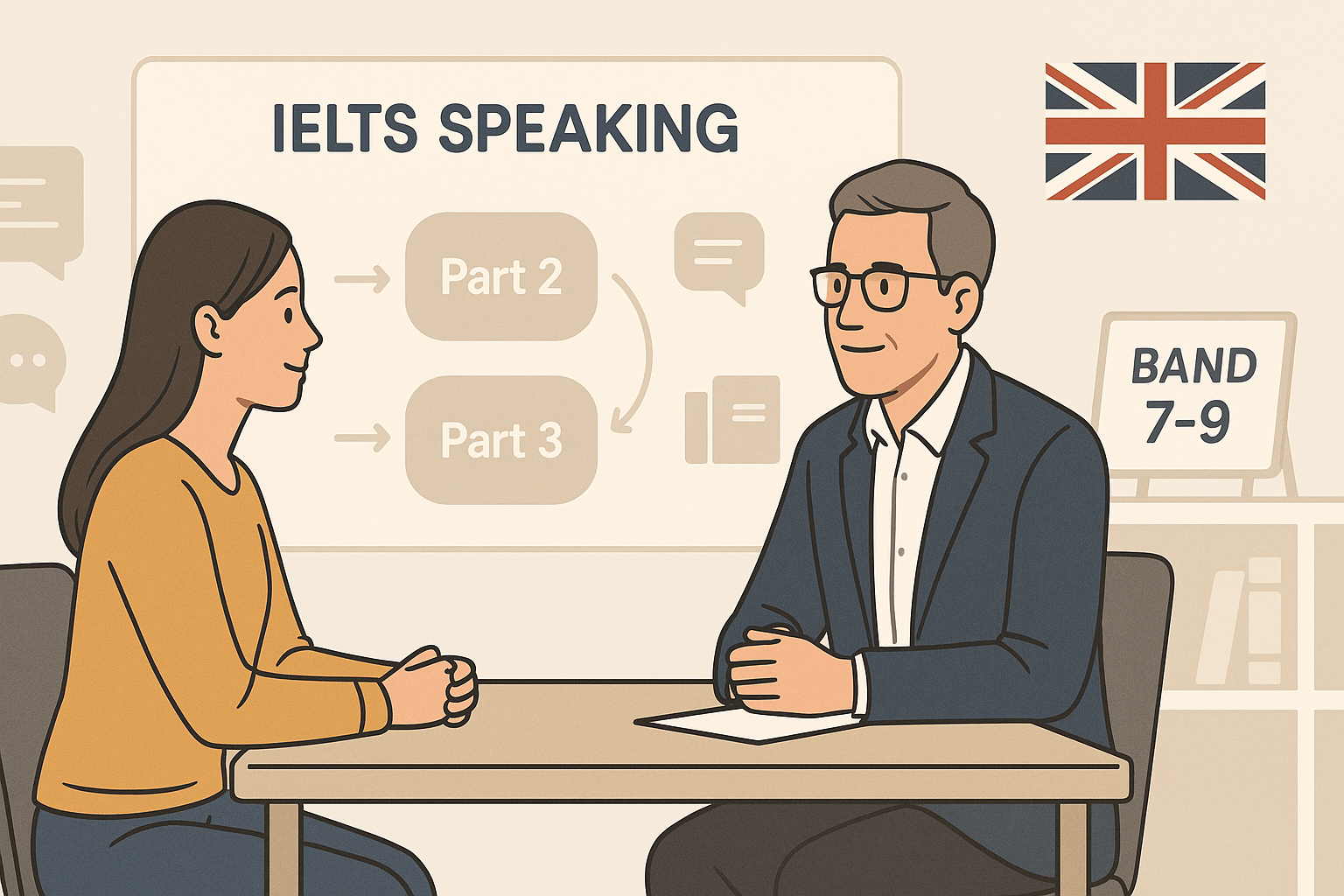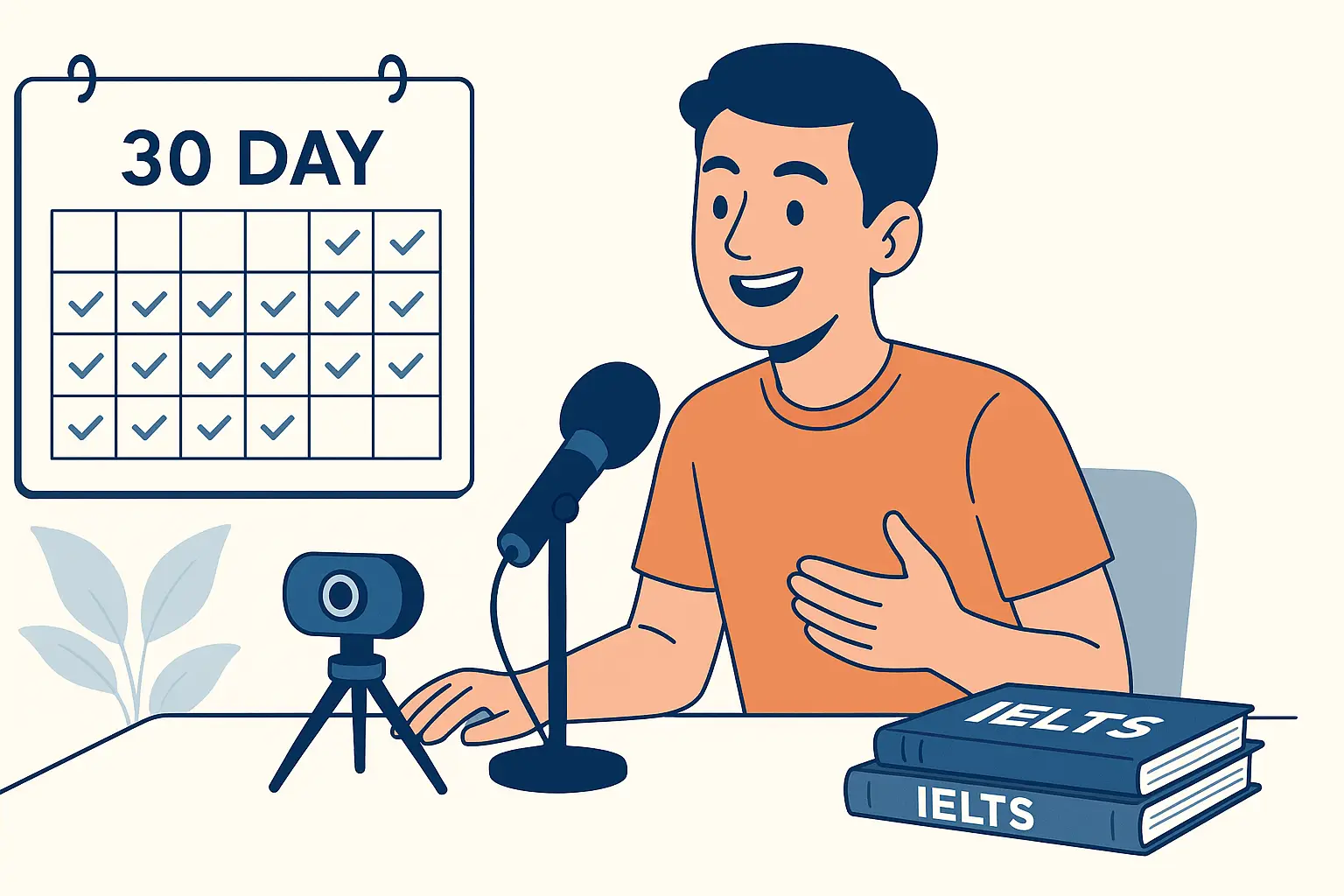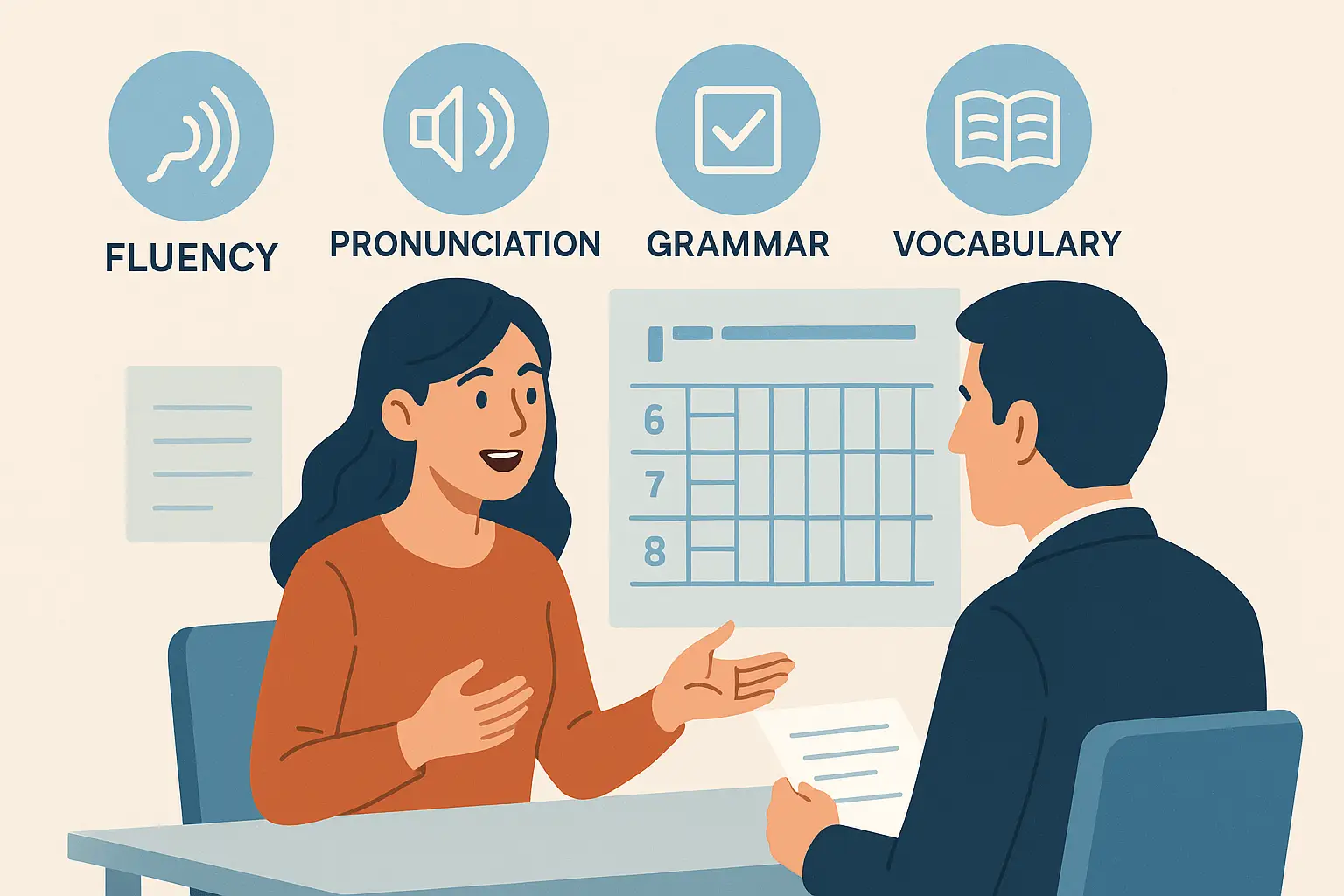As an international IELTS teacher who has worked with students from over 30 countries, I’ve seen the same thing time and again: learners underestimate the IELTS Speaking test. They know it has three parts, but they don’t know why each part matters, how to approach them differently, or what strategies actually move them from Band 6 to Band 8 or even 9. That’s why I created this guide on IELTS Speaking Parts. I want to walk you through the format, the mindset, and proven strategies that have helped my students succeed.
What Is the IELTS Speaking Test?
The IELTS Speaking test is a face-to-face interview with a certified examiner. It lasts around 11 to 14 minutes and is divided into three parts:
- Part 1: Introduction and Interview (4-5 minutes)
- Part 2: The Long Turn / Cue Card (3-4 minutes)
- Part 3: Discussion (4-5 minutes)
The examiner evaluates your performance using four criteria: Fluency and Coherence, Lexical Resource, Grammatical Range and Accuracy, and Pronunciation.
If you’re unsure about the timing and structure, I break it all down in this Speaking Test Format and Timing guide.
Part 1: Warm-Up Questions – But Don’t Get Too Comfortable
In Part 1, the examiner asks general questions about familiar topics like home, studies, hobbies, or food. It feels relaxed, but here’s the mistake many students make: they keep their answers too short.
One of my students, Ahmed from Egypt, used to answer like this:
Examiner: “What do you do?”
Ahmed: “I study.”
That’s not enough. In our lessons, I trained him to extend his answers with reasons and details. Eventually, his response became:
“I’m currently studying architecture at university because I’ve always been fascinated by design and how buildings shape a city’s character.”
That shift alone helped raise his Fluency and Coherence score.
If you want help expanding your answers naturally, explore my Part 1 Band 7+ sample responses and strategies.
Part 2: Cue Card Challenge – Fluency Under Pressure
Part 2 gives you 1 minute to prepare and then 1-2 minutes to speak on a topic. This part terrifies many students. The biggest mistake? Trying to memorise model answers.
I remember Natalia from Brazil freezing halfway through her cue card. The problem wasn’t grammar. It was a lack of structure. I taught her a method I call the “Past-Present-Future Story Arc.”
Let’s say the topic is:
“Describe a person you admire.”
She would plan:
- Past: When and how she met the person
- Present: What makes the person admirable
- Future: How they influence her future goals
This gave her a roadmap and kept her talking fluently for the full 2 minutes.
You can learn more in my full Cue Card fluency guide.
Part 3: Opinion-Based Questions – Depth Over Detail
Now comes Part 3, often called the most difficult. The examiner will ask questions related to the Part 2 topic, but deeper and more abstract.
Here’s where students struggle:
- They give personal opinions instead of general ones
- They don’t support their ideas with examples
- They run out of things to say after one sentence
Take Mei from China. She was great in Parts 1 and 2 but struggled here. I showed her how to use a PEEL structure:
- Point: State your opinion
- Explain: Why?
- Example: Add a real or hypothetical one
- Link: Connect back to the question
Now, when she’s asked, “Do you think famous people have a responsibility to act as role models?”, she doesn’t panic. She delivers structured answers with depth.
I walk you through that structure in this Part 3 opinion strategy guide.
Common Challenges Students Face
1. Freezing Mid-Sentence
It’s often because you’re translating from your native language. Train your brain to think in English with speaking drills and low-pressure shadowing exercises.
2. Repeating the Same Words
Vocabulary is key across all parts. If vocabulary is your struggle, this IELTS Speaking Vocabulary Booster has helped many of my students.
3. Poor Fluency
Stop focusing on perfection. You’re not being judged on accent, but on natural flow and connected ideas.
I discuss all three pillars (grammar, vocabulary, fluency) more deeply in my complete Speaking Guide here.
FAQs About IELTS Speaking Parts
Q: Can I ask the examiner to repeat a question?
Yes! Just say, “Sorry, could you repeat the question, please?” This doesn’t affect your score.
Q: Will I lose marks for a strong accent?
No. As long as you’re clear and understandable, your accent is not a factor.
Q: What if I go off-topic in Part 2?
As long as you stay mostly relevant and show strong communication skills, you won’t be penalised heavily.
Q: How do I know how long 2 minutes is in Part 2?
You don’t have to time yourself. The examiner will stop you after 2 minutes. Just keep going until they interrupt.
Q: Should I use idioms and fancy vocabulary?
Only if you’re confident using them correctly. Misused idioms do more harm than good.
Final Thoughts
The IELTS Speaking test isn’t just about showing off your grammar. It’s about communicating naturally under pressure, structuring your thoughts, and building confidence through practice. By understanding the purpose and format of each part, and applying strategies tailored to your weaknesses, you can dramatically increase your score.
Remember, you don’t have to do it alone. I’ve helped hundreds of students using the strategies and internal links I’ve shared here. Feel free to explore them and choose the ones that match your learning style.
And if you’re ever unsure about where to start, just begin by mastering one part at a time. Start small. Speak often. Improve consistently.
Useful Resources:





5 Responses